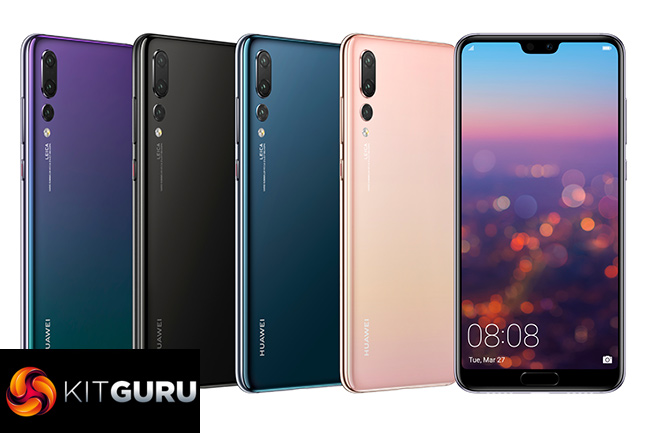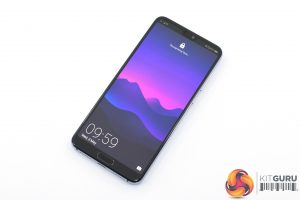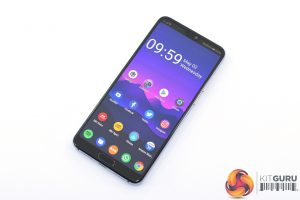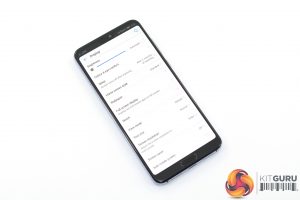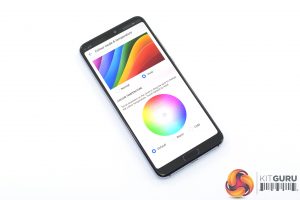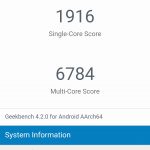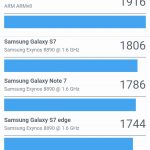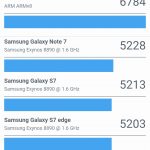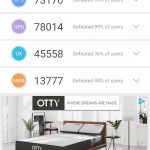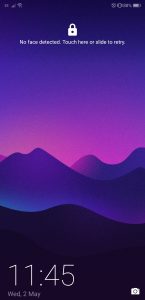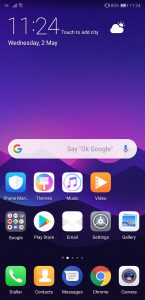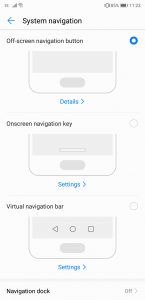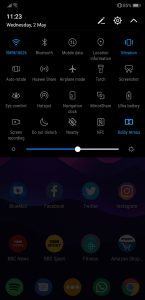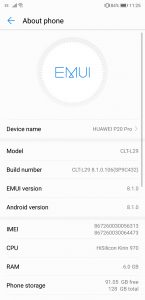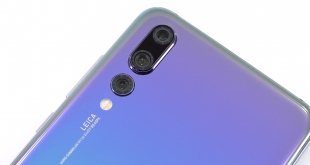
At the end of March, Huawei launched its latest flagship – the P20 Pro. While its standout feature is far-and-away the triple rear-facing camera configuration, the phone also boasts a 6.1in OLED panel, class leading battery life, as well as Android Oreo 8.1. I've been using it for over a month now, so just how good is it?
There's no doubt that Huawei‘s P20 Pro is one of the most exciting – and different – Android smartphones to be released this year. Its design may be similar to the iPhone X with its rear camera placement and the increasingly common ‘notch', but having three cameras on the back is certainly unique.
Those cameras have also been designed in collaboration with esteemed camera manufacturer Leica, a partnership that was first unveiled two years ago with the launch of the P9. After a month of use, I'm keen to share all my thoughts on this £799 flagship.
Specification
| Size | 155.0 mm x 73.9 mm x 7.8 mm (H x W x D) |
| Weight | Approx. 180g (including the battery) |
| Colors | Twilight, Black, Midnight Blue, Pink Gold |
| Display | 6.1″ HUAWEI FullView Display
18:9 OLED 3D glass 1080 x 2240 pixels, 408ppi 16.7M colors |
| CPU | HUAWEI Kirin 970
Octa-core CPU (4 x Cortex A73 2.36GHz + 4 x Cortex A53 1.8GHz) + i7 co-processor |
| GPU | Mali-G72 MP12 767MHz |
| NPU | Neural Network Processing Unit |
| Operating System | Android™ 8.1 |
| Emotion UI | EMUI 8.1 |
| Memory | 6GB RAM + 128GB ROM |
| Dual SIM | Single/Dual-SIM |
| NFC | Card reading mode / Point to point mode / Card simulation mode (make payment by SIM card*, or HCE) are supported
*The SIM card used for SIM card payment can only be inserted into the SIM1 card slot |
| Connectivity | Wi-Fi 2.4G and 5G, 802.11a/b/g/n/ac
BT4.2, BLE, aptX, aptX HD, LDAC and HWA are supported USB Type-C, USB 3.1 GEN1 |
| Camera | Front: 24MP, f/2.0
Rear camera: 40MP RGB (f/1.8) + 20MP monochrome (f/1.6) + 8MP telephoto (f/2.4) HUAWEI AIS 5x Hybrid Zoom 4K and 960 fps video recording |
| Battery | 4000mAh (Typical Value) |
Design
Note: you may need to disable your ad block software if the above gallery is not displaying properly.
While the most interesting aspect of the Huawei P20 Pro may be those three cameras round the back, the rest of the phone's design is similarly impressive. It sports a trendy Gorilla Glass back and metal frame, but the real highlight is the new ‘Twilight' colour option that Huawei has introduced, which has a lovely gradient effect from top to bottom.
On the front of the phone, the most visible design feature here is the notch, which draws inevitable comparisons with the iPhone X. However, the P20 Pro's notch is considerably slimmer, with just a small cut-out for the earpiece speaker and the 24MP selfie camera. Incidentally, you can actually ‘disable' the notch in the system settings, which turns off the display around the notch given it a more traditional look (as seen above).
Huawei has persisted with a front-mounted fingerprint scanner, too, and this sits at the bottom of the phone, giving it a slightly chunky chin – relative to the rest of the bezels, at least. On the bottom edge of the phone, we find the USB-C charging port, as well as the speaker and microphone grilles. No 3.5mm jack.
The right-edge of the phone houses the volume rocker and power button, with the power button also sporting some red colouring to make it easily identifiable. The SIM tray, which can fit 2x nano SIMs but not a microSD card, is positioned on the left-edge.
Lastly, turning to the back of the phone, we get a good look at that triple camera configuration. From top to bottom, we have the 8MP telephoto lens, a whopping 40MP RGB camera and the 20MP monochrome lens at the bottom. We will of course look at the camera and image quality later in the review.
Display
Moving onto the display, as mentioned the P20 Pro sports a 6.1in AMOLED panel. Its resolution has had a slight bump up over the Mate 10 Pro, from 2160×1080 up to 2240x1080p, but it is still not as sharp as the likes of the Galaxy S9 or Pixel 2 XL. For the pixel peepers out there, the P20 Pro boasts a pixel density of 408 PPI.
In terms of colours and vibrancy, the P20 Pro does used an AMOLED panel so it is certainly a bit punchier, with enhanced contrast, than the smaller P20 which ‘only' has an LCD panel. There is also the option in the display settings to choose between ‘vivid' and ‘standard' modes, with the latter being technically more accurate but the former giving slightly more pleasing – though admittedly more artificial – colours.
There is also a screen colour temperature adjustment wheel available, allowing users to tinker with the white balance. Out of the box, with the ‘vivid' profile enabled, I thought the white balance was perfect, though the ‘standard' profile does make whites look a bit warmer.
On the whole, I'm yet to use a phone with a bad OLED panel, and the P20 Pro is no exception. However, side by side with the new Galaxy S9 it does look comparatively flat, which is a shame considering the price. Again, it's by no means a bad panel – it's just not the best out there.
Brightness levels are good, though, with a big range that allows the phone to be very usable outdoors but also pleasantly dim when you're lying in bed at night.
Performance
The P20 Pro uses the same Kirin 970 that we first saw in the Mate 10 Pro, and that is no bad thing. Alongside this we have 6GB RAM and 128GB of internal storage.
Not surprisingly, the P20 Pro scores very similarly to the Mate 10 Pro in Geekbench 4 and Antutu – they do share all the same core specs, after all. This puts the P20 Pro roughly on-par with other Snapdragon 835-based phones, and in the real world you are very unlikely to experience any slow down. I didn't, and the generous 6GB of RAM also means switching between dozens of open apps remains speedy.
The P20 Pro also supports facial recognition to unlock the device. Huawei states this takes just 0.5 seconds, and in my experience that seems about right – it is very fast. It can slow down a bit in low-light situations, but it is certainly a great addition to the P20 Pro.
The fingerprint reader is also lightning fast – certainly faster than the facial recognition – which is great to see. I do prefer the fingerprint scanner to be on the back of the phone as I find that to be a more natural position, but the scanner itself worked flawlessly during my testing.
Software
Built on Android Oreo 8.1, the P20 Pro runs EMUI 8.1, which is Huawei's custom Android skin.
One of the more interesting aspects of EMUI is its ability to use the fingerprint reader as the home buttons. This is enabled under the ‘system navigation' setting and is actually quite simple – a single tap on the scanner takes you back, a tap and hold takes you to the home page and swiping left or right brings up the open apps.
There's also the ability to hide the notch, as I previously mentioned, which works surprisingly well given the screen is an OLED panel – you can only see the outline of the screen in direct sunlight.
I do think the overall UI could do with a bit of a revamp, though – the quick settings drop-down menu which looks like it's come straight out of 2011, while the Huawei launcher isn't as clean as Google's stock offering.
The overall experience of EMUI has definitely improved, though, as it feels less buggy and more responsive – even when compared with last year's Mate 10 Pro. I'd still take stock Android instead, but EMUI not a black mark against the phone like it has been in the past.
Camera
Now, for the most interesting bit – a look at the triple-camera setup of the P20 Pro. As a quick refresher, the three cameras on the back of the phone are as follows: 1x 40MP RGB sensor (f/1.8), 1x 20MP monochrome sensor (f/1.6) and 1x 8MP telephoto (f/2.4).
For this section, I'm going to look at three main areas – general image quality, the new zoom feature, and low-light performance.
General image quality
Before diving into the new telephoto lens, what is general image quality like with the P20 Pro out of the box? Above you can see 16 shots taken with the primary 40MP sensor in various scenarios and lighting environments. Not all shots are at the native 40MP size as you can't use the zoom feature at that resolution, but even the 10MP images look sharp on a 4K monitor.
Overall quality is very good – there's no denying that. The camera auto-focuses, takes and processes images very quickly, meaning you can get the photo you want without much fuss.
However- and it pains me to say this – I think the images could be a lot better if Huawei hadn't gone overboard with the on-camera processing. Once you take a photo, a very aggressive sharpening algorithm is applied and, while it can sometimes help in a well-lit environment, a lot of the time it makes images look less natural and slightly artificial.
Colours are also boosted slightly too much in attempt to make images look vibrant and rich. I'm all for eye-pleasing images that aren't necessarily 100% true-to-life, but I do think the P20 Pro takes it a step too far.
Don't get me wrong, it's an impressive camera capable of taking some very detailed shots. I just feel the hardware has been slightly let down by the software here.
Zooming in
I really like the zoom features of the P20 Pro, however. There are three different levels of zoom available at the press of a button in the camera app – 1x, 3x and 5x zoom. 1x zoom equals no zoom – it's a standard wide-angle photo taken with the RGB sensor at 10MP. 3x zoom, however, switches over to that new telephoto lens, while the 5x zoom is actually a hybrid mode that combines the data from the telephoto lens with the 40MP RGB sensor to give an even closer shot of your subject.
However it works, the images that come out are very impressive. I found that 3x zoom takes slightly sharper photos than the 5x mode, but with both you still get a tremendous amount of ‘punch in'. For those interested, 1x zoom is equivalent to a 27mm focal length, 3x zoom is equivalent to 83mm, while the 5x mode is equivalent to 135mm.
Image quality is obviously not as good at 5x zoom as it is using the wide-angle lens, but I think the amount of detail retained – while zoomed so far in – is incredible. Out of all the phones I've used, the P20 Pro has to have the best zooming abilities.
Night mode
The last area I want to touch on is night mode. Huawei made this quite a prominent feature at the launch event, and the impression I got was that it works by keeping the shutter open for up to 6 seconds for improved low-light performance, while the phone's AI can automatically stabilise the image so there's no motion blur introduced.
However, after using it plenty of times, it seems to me that night mode is more of an extravagant HDR mode, as it appears during the course of those 4 or 5-second long ‘exposures', the phone is actually taking multiple images at different brightness levels and intelligently combining them.
I have to say, the results are mixed. I found night mode actually works best before it gets to night-time, with some twilight shots of the Eiffel tower (as above) looking really sharp with great dynamic range. However, when it gets to the very late hours of the day, with just a few streetlamps to provide any ambient lighting, I found photos taken on auto mode can look better, despite the high ISO levels.
When it works, it works really well and the low-light images look fantastic. It is also worth saying that the image quality on the photos taken in auto mode is very, very impressive as well. However, for every good night mode shot, I found I would get a couple images that just don't look as good as the auto mode.
Battery
Lastly, coming to battery life, the P20 Pro retains the same 4000 mAh battery as the Mate 10 Pro. It is no surprise, then, that the battery life is excellent.
I will start by saying it is not quite as good as the Mate 10 Pro as the P20 Pro has a slightly larger, slightly higher-resolution display, but I still found myself getting to 10pm and having around 40% of battery left after a full day's use.
In short, the P20 Pro will last longer than any other flagship on the market right now – if we exclude the Mate 10 Pro, of course. Even if you do need to top up in a hurry, the P20 Pro's included charger supports Huawei's Super Charge technology which can get you to around 50% capacity after a 30 minute charge.The Huawei P20 Pro is undoubtedly the company's best phone to-date, with improvements to the camera, software and a swanky new design.
Speaking of the design, the decision to incorporate a ‘notch' will prove divisive, but you can actually disable it in the settings which is quite unique. The star of the show has to be the new ‘Twilight' colour option, though, with a lovely gradient finish that is just jaw-dropping.
Other new features include facial recognition technology to unlock the phone, which works very well, as well as the ability to remove the navigation buttons altogether in favour of using the fingerprint scanner to go back or switch to a different app.
The triple-camera setup is undoubtedly the main talking point, though, and while it is certainly impressive, I can't help but feel a twinge of disappointment as it could've been even better. Essentially, the photo processing is just too aggressive and it makes photos look over-done and a bit artificial. Night mode is also a bit hit and miss, and I had such high hopes for it after getting a hands-on demo in the weeks before the P20 Pro's release.
I'm not saying it's a bad camera setup – not at all. The camera takes good, detailed shots, and the zoom technology is absolutely class-leading. I just wish the processing could be toned down a bit to give a more natural look the the photos.
So, on the whole, is the Huawei P20 Pro worth buying? Absolutely. It is a gorgeous smartphone, with top battery life and impressive overall responsiveness. It is, however, £799 which puts it right up there against some of the best phones available. If you're looking for best in class camera quality, I think that's still Pixel 2. The Samsung S9 has a better screen, too.
If the price comes down over the coming months, like it has for the Mate 10 Pro, that would only help. As it is, the P20 Pro is undoubtedly an excellent all-rounder, but I don't think it's the best Android on the market.
You can buy one for £799 from Carphone Warehouse HERE.
Discuss on our Facebook page HERE.
Pros
- Gorgeous new colour option.
- Excellent battery life.
- Photo zoom is class-leading.
- Low-light camera performance is also impressive.
- Software is stable and has some useful features.
- Fast facial recognition and fingerprint scanner.
- Snappy performance.
Cons
- Photos are over-processed.
- Night mode is hit and miss.
- Screen isn't as good as the S9.
KitGuru says: The P20 Pro is the best Huawei phone yet. With less aggressive photo processing, it could be even better.
Be sure to check out our sponsors store EKWB here
 KitGuru KitGuru.net – Tech News | Hardware News | Hardware Reviews | IOS | Mobile | Gaming | Graphics Cards
KitGuru KitGuru.net – Tech News | Hardware News | Hardware Reviews | IOS | Mobile | Gaming | Graphics Cards


